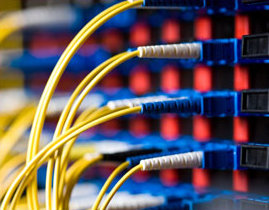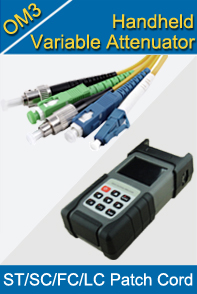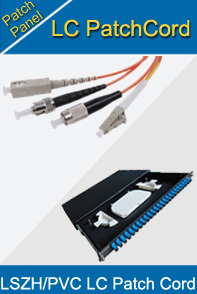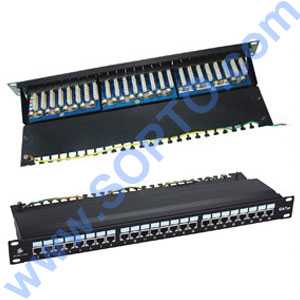-

- Sopto Home
-

- Special Topic
-

- Patch Cord Knowledge
-

- What is Fiber Optic Patch Panel Used For?
Patch Cord Knowledge
- Fiber Optic Connector Ferrule Design
- Fiber Optic Connector Design
- E2000 to ST Fiber Patch Cable Overview
- Acceptable and Unacceptable Fiber Connector End-Face Finishes
- Using Wipes and Cleaning Cassettes to Clean Fiber Patch Cords
- Not-Too-Tight Mating of Fiber Optic Connectors
- Matching Gel and Oils Contamination about Fiber Optic Connectors
- The Effect of Improper Use of Fiber Optic Connectors
- Why Fiber Optic Connectors are Fragile?
SOPTO Special Topic
Certificate



Guarantee
Except products belongs to Bargain Shop section, all products are warranted by SOPTO only to purchasers for resale or for use in business or original equipment manufacturer, against defects in workmanship or materials under normal use (consumables, normal tear and wear excluded) for one year after date of purchase from SOPTO, unless otherwise stated...
Return Policies
Defective products will be accepted for exchange, at our discretion, within 14 days from receipt. Buyer might be requested to return the defective products to SOPTO for verification or authorized service location, as SOPTO designated, shipping costs prepaid. .....
Applications
 Fiber Patch Cords have a widely application. Where the need for the optical fiber connection, where you need fiber optic patch cords.
Fiber Patch Cords have a widely application. Where the need for the optical fiber connection, where you need fiber optic patch cords.
Testing Equipment
FTTX+ LAN
Optical Fiber CATV
Optical Communication System
Telecommunication
SOPTO Products
- Fiber Optic Transceiver Module
- High Speed Cable
- Fiber Optical Cable
- Fiber Optical Patch Cords
- Splitter CWDM DWDM
- PON Solution
- FTTH Box ODF Closure
- PCI-E Network Card
- Network Cables
- Fiber Optical Adapter
- Fiber Optical Attenuator
- Fiber Media Converter
- PDH Multiplexers
- Protocol Converter
- Digital Video Multiplexer
- Fiber Optical Tools
- Compatible
Related Products
Performance Feature
Good Water-proof
Low insertion loss;
low reflection loss;
Stability, good repeatability;
High-precision ceramic ferrule;
Compatible with NTT standard;
Precision Grinding and fully testing;
Compliance with international standards
Patch Cord Knowledge
Recommended


What is Fiber Optic Patch Panel Used For?
A fiber-optic patch panel is used to separate out the fibers within a fiber-optic cable. By using one of these panels, the fibers can be spliced to individual fibers on other cables, allowing the cables to be crossed and connected in a variety of ways. In addition, the panel creates a safe environment in which to work with exposed fibers.
There are two main types of fiber-optic patch panels. One is a wall-mounted device, which, in its most basic form, can keep 12 different fibers separate from one another. If the fiber-optic cable has more than 12 fibers, the extra fibers can be moved to a second panel or an engineer can use a panel that is designed to hold more fibers separately. Wall-mounted panels can be constructed to hold up to 144 fibers at once.
The other type of fiber-optic patch panel is a rack-mounted panel. This type of panel holds the fibers horizontally and is often designed to open like a drawer. Sliding the panel opens and gives an optical engineer easy access to the fibers inside.

An optical engineer often uses a fiber-optic patch panel to test the fibers within an optical cable. Problems with a fiber-optic cable can be located within a single fiber when the fibers are split apart and tested separately. The panels make it easy to organize the fibers. Furthermore, working with the fibers within the tray of the fiber-optic patch panel protects the fibers from anything in the environment that could damage them.
A fiber-optic cable needs to be split at one end in order gain access to the individual fibers. The separated fibers are fed into different ports, each of which has a fiber-optic adaptor. These adaptors can then be used to plug individual fibers into other devices.

The adaptors on a fiber-optic patch panel can come in a variety of different shapes. In most panels, all of the adapters are of the same type, but if there is more than one type of fiber-optic connector used within the network, it may be necessary to get a panel with hybrid adapters. These types of adapters can be used to connect different types of connectors on fiber-optic cables.
For purchasing high quality fiber optics and patch panels with low cost or for more products’ information, please contact a Sopto representative by calling 86-755-36946668, or by sending an email to info@sopto.com.



